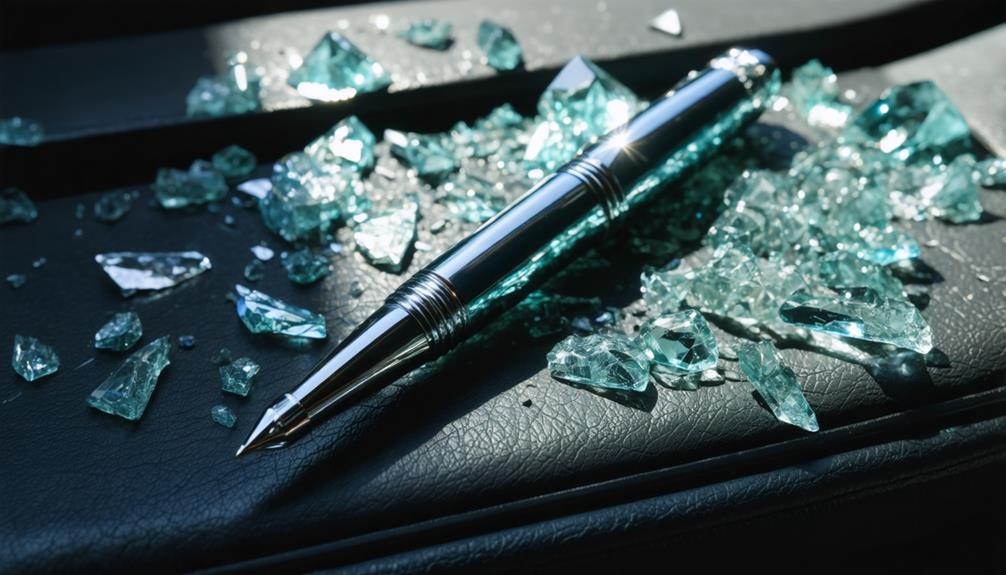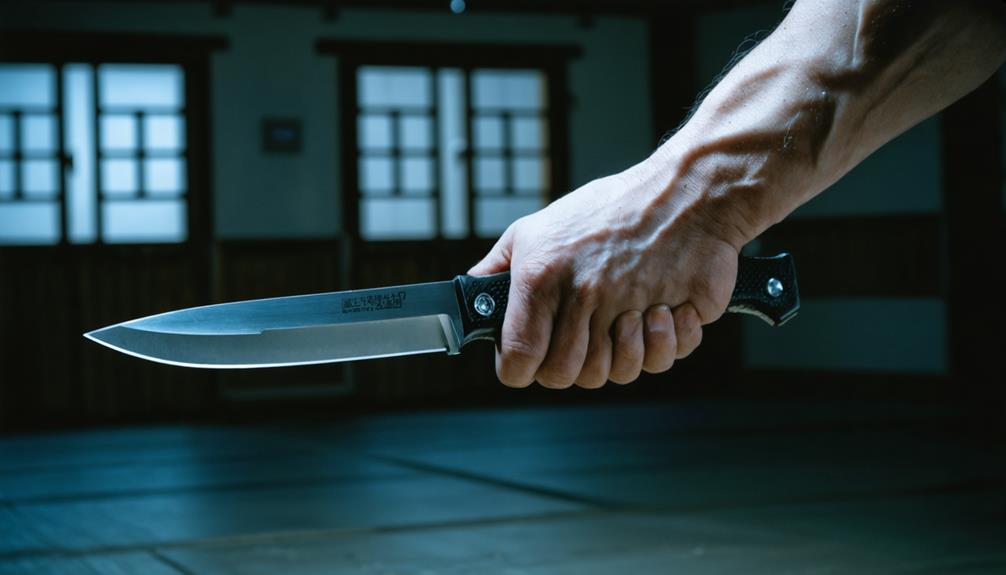
Brainstorm Security Shop

For Orders Over $199

On Any Of Our Products

Details On Refund Page
The topic of self defense knifes presents a fascinating intersection of practicality, legality, and personal safety. These tools, ranging from tactical to folding designs, offer both the allure of self-reliance and the responsibility of informed ownership. While their compact size and durable materials make them appealing for personal protection, navigating the complex legal landscape and mastering safe handling techniques are paramount. How does one balance the need for security with the obligations of legality and skillful use? This intricate question invites a deeper exploration into the choices and challenges faced by those considering such tools.
When considering self-defense knives, it is crucial to understand the various types available to ensure you choose the most suitable option for your needs. Among the myriad of choices, tactical knives and folding knives stand out as popular selections for self-defense.
Tactical knives are designed with military and combat applications in mind, often characterized by their robust construction and versatile utility. These knives typically feature fixed blades, providing enhanced strength and reliability, which is crucial in high-stress situations. The design of tactical knives often includes ergonomic grips and non-reflective finishes, making them not only functional but also discreet.
On the other hand, folding knives offer a more compact and convenient option for self-defense. These knives can be easily carried in a pocket or bag, making them accessible and discreet. Folding knives are equipped with a pivot mechanism that allows the blade to fold into the handle, reducing the risk of accidental injury when not in use.
They often feature locking mechanisms to ensure the blade remains securely in place when open. Whether choosing a tactical knife for its durability or a folding knife for its portability, understanding these types is essential for informed decision-making in self-defense.
Selecting the appropriate self-defense knife is only part of the equation; understanding the legal considerations surrounding their possession and use is equally important. Self-defense laws and knife regulations vary significantly across jurisdictions, and it is imperative to be well-informed about these differences to ensure compliance and avoid legal repercussions.
In many regions, the legality of carrying a self-defense knife is contingent upon several factors, such as blade length, type of knife, and intended use. For instance, some areas may impose restrictions on automatic or switchblade knives, while others may have specific limitations on fixed or folding knives.
Furthermore, knife regulations often distinguish between carrying a knife for self-defense and carrying one for utilitarian purposes. Therefore, comprehending these distinctions is crucial for lawful possession.
In addition to possession, understanding the self-defense laws related to the use of knives is vital. Legal frameworks typically assess the justification of using a knife in self-defense based on the necessity and proportionality of the response to a threat.
Misinterpretation or ignorance of these laws can lead to severe legal consequences, emphasizing the importance of thorough research and, if needed, consultation with legal professionals to navigate this complex landscape responsibly.

Choosing the right knife for self-defense involves evaluating various factors to ensure both effectiveness and personal comfort. One critical aspect is the blade material, which significantly influences the knife’s durability and performance. High-carbon stainless steel is a popular choice due to its excellent edge retention and resistance to corrosion, making it reliable in diverse conditions.
However, other materials like titanium and ceramic might be preferred for their lightweight properties and sharpness, although they may require more maintenance.
Equally important is the handle design, which affects grip, control, and overall usability. A well-designed handle should offer a secure grip, even in high-stress situations. Materials such as G-10, micarta, and rubberized composites are favored for their non-slip properties, ensuring the knife remains firmly in hand during use.
Ergonomic handles, possibly with finger grooves or textured surfaces, can further enhance grip stability and comfort.
When choosing a self-defense knife, it is essential to balance these elements with personal preferences and intended use scenarios. Ultimately, the right knife should feel like a natural extension of the hand, instilling confidence in its utility while aligning with the user’s specific needs and circumstances.
Ensuring the safe carry of a self-defense knife is paramount, as it minimizes the risk of accidental injury and guarantees readiness in emergencies. Knife safety begins with understanding the appropriate carrying methods that align with legal regulations and personal security needs. When selecting a carrying method, consider factors such as accessibility, concealment, and comfort. For instance, pocket clips allow for discrete and immediate access, whereas holsters offer secure retention.
Understanding various carrying methods can enhance knife safety:
| Carrying Method | Advantages | Potential Drawbacks |
|---|---|---|
| Pocket Clip | Quick access | May be visible |
| Holster | Secure retention | May hinder mobility |
| Belt Sheath | Easy reach | Can be cumbersome |
| Inside Waistband | Concealment | Requires adjustment |
| Neck Carry | Lightweight | Limited knife size |
Selecting the appropriate carry method depends on individual lifestyle and intended use. It is crucial to regularly inspect the knife and its sheath or holster for wear and tear, ensuring optimal performance. Additionally, becoming familiar with local laws regarding knife carry is essential to avoid legal repercussions. Proper education in knife safety not only enhances personal security but also fosters responsible ownership and use.

Understanding how to effectively use a self-defense knife complements the safe carrying practices previously discussed. Mastery of technique is crucial; it involves not only physical dexterity but also a tactical mindset. The knife should be considered a last resort tool, used only when escape is not possible and personal safety is at risk.
To optimize its effectiveness, one must be trained in the nuances of handling and deploying the knife swiftly and accurately.
Distraction techniques play a pivotal role in self-defense. By momentarily diverting an assailant’s attention, you create a crucial window to either escape or reposition yourself advantageously. This can be achieved through verbal cues, sudden movements, or by utilizing the environment to your advantage.
Once the attacker is off-guard, a well-executed surprise attack can be initiated if absolutely necessary. The key is the element of surprise; a quick, unexpected maneuver can deter further aggression, offering a chance to de-escalate the situation.
Training in these techniques should be undertaken with a professional to ensure proficiency and safety. Practitioners must understand the legal implications and ethical considerations of using a knife in self-defense, emphasizing that it should be the absolute last line of defense.
Proper maintenance and care of a self-defense knife are essential to ensure its effectiveness and longevity. A well-maintained knife not only performs better but also provides reliability when it is needed most.
Regular maintenance begins with understanding the appropriate sharpening techniques. The choice of sharpening tools, such as whetstones, diamond stones, or guided sharpening systems, depends on the blade’s material and design. It is crucial to maintain the blade’s original angle, usually between 20 to 30 degrees, to ensure optimal sharpness and performance. Consistent sharpening prevents dullness and extends the blade’s lifespan.
In addition to sharpening, proper cleaning methods are vital. After each use, clean the knife thoroughly to remove any residue or debris that could cause rust or corrosion. Use warm water and mild soap, avoiding harsh chemicals that may damage the blade or handle.
Dry the knife completely after washing to prevent moisture buildup. For knives with folding mechanisms, ensure all moving parts are free from dirt and lubricate them periodically to ensure smooth operation.
The evolution of personal protection tools dates back to ancient weapons, which were essential for survival. Over time, legal regulations have influenced their design and usage, reflecting societal changes in safety perceptions and technological advancements.
Design variations in tools intended for personal protection reflect cultural significance, as diverse societies prioritize different attributes such as utility, aesthetics, and symbolism, leading to distinct designs that resonate with their historical and cultural narratives.
When comparing self-defense tools, legal considerations and training requirements are crucial. Self-defense knives, unlike other tools, often require specialized training and may face stricter legal restrictions, influencing their practicality and appropriateness relative to alternative options.
Carrying a self-defense tool can influence an individual’s psychological state by promoting fear management and providing a confidence boost. This dual effect may enhance personal security perception but also requires responsible understanding of potential risks and responsibilities.
Beyond defense, items designed for everyday carry can fulfill various functions, including utility tasks such as cutting or opening materials. However, legal considerations must be taken into account to ensure compliance with local regulations and restrictions.
Self-defense knives, including tactical and folding types, serve as essential tools for personal protection, each offering unique benefits. Understanding legal considerations, such as blade length and type restrictions, is crucial for compliance and responsible ownership. Selecting the appropriate knife involves evaluating size, materials, and ergonomics for secure handling. Safe carrying practices, effective use techniques, and diligent maintenance are vital for ensuring readiness and longevity. Comprehensive knowledge and training enhance the utility and safety of self-defense knives in critical situations.
